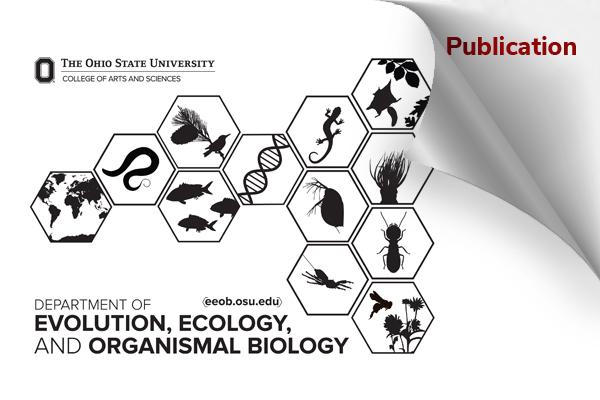EEOB Publication - Santos

Geologic History Explains Freshwater Fish Species Richness Across the Conterminous USA
Brian K. Gallagher, Elizabeth C. Santos, Michael Dumelle, Philip R. Kaufmann, Joseph L. Ebersole. 2025. Global Ecology and Biogeography, Volume34, Issue10. DOI: 10.1111/geb.70139
Abstract
Aim
Freshwater fishes comprise over 20% of vertebrate biodiversity despite occupying < 1% of the Earth's surface. However, species richness differs substantially among river basins. Fundamentally, richness patterns can be explained by spatial variation in diversification rates, evolutionary time and habitat capacities, which are in turn shaped by landscape change over geologic timescales. To test how geologic disturbances have influenced the accumulation of freshwater fish biodiversity, we hypothesized species richness would be (1) ordered by regional geologic history, (2) associated with high or intermediate river capture rates, (3) higher in assemblages with older evolutionary origins and (4) positively associated with stream size.
Time Period
2008–2019.
Location
Conterminous United States (USA).
Major Taxa
Freshwater fishes.
Methods
We analysed native species richness from a spatially representative survey of 5321 fish assemblages at 3609 sites. Geologic history was determined from surrogates of tectonic activity, glaciation, sea levels and river capture over the last 66 million years, which were paired with previously published evolutionary time estimates. Hypotheses were tested with spatial linear models.
Results
All hypotheses were at least partially supported. (1) Rank-order richness matched hypothesized effects of geologic disturbances on evolutionary time and diversification rates. (2) Richness peaked in lowlands with high putative river capture rates. (3) Richness increased with evolutionary time at broad scales, but this relationship was weak and influenced by non-teleost taxa. (4) Richness largely increased with stream size. Overall, the tectonically active western USA exhibited lower richness, weaker effects of stream size and a greater share of young lineages compared to the more geologically stable eastern USA, especially unglaciated lowlands within the Mississippi Basin.
Main Conclusions
We demonstrate that deep-time processes leave a persistent mark on fish species richness. Thus, accounting for geologic history can improve assessments of freshwater biodiversity and biological condition in the USA and beyond.
